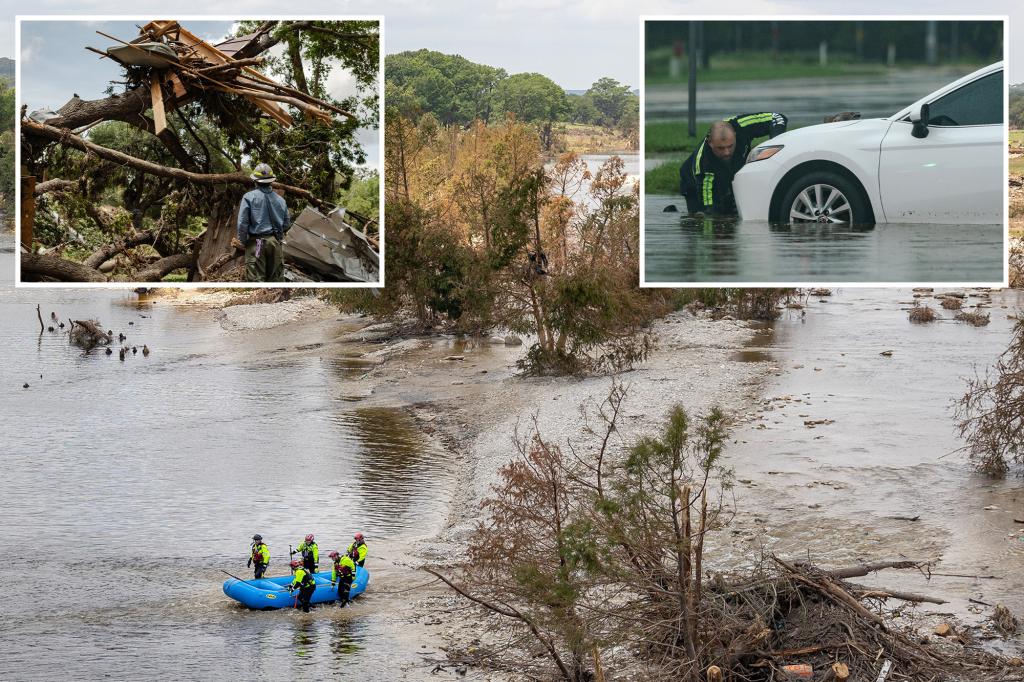Introduction
As winter sets in across the United States, meteorologists are closely monitoring a potentially disruptive ice storm that could impact multiple states this weekend. Forecasts indicate that hazardous conditions, including freezing rain and slick roads, are likely to affect millions of residents. This impending storm brings with it the potential for significant disruptions to daily life, transportation networks, and even power systems. Authorities are urging communities to prepare for the possibility of icy conditions, while experts warn that staying informed about the latest weather updates will be crucial in minimizing the storm’s impact.
What to Expect: The Path of the Ice Storm
The upcoming ice storm is expected to affect a broad swath of the United States, with the greatest impact in the Midwest, South, and parts of the East Coast. Meteorologists predict that the storm will bring a combination of freezing rain, sleet, and snow, which can create treacherous travel conditions and strain infrastructure. While the precise path of the storm is still being refined, current forecasts indicate that areas from Texas to Pennsylvania could experience significant ice accumulation.
Key Areas of Concern
Some of the states most likely to be impacted by the storm include:
- Texas – Cities such as Dallas and Austin are on high alert as freezing rain is expected to hit the area, making roads hazardous and threatening power lines.
- Oklahoma – Ice buildup is expected to create slippery roads, while colder temperatures could lead to power outages in rural areas.
- Arkansas and Missouri – Ice could accumulate rapidly, potentially disrupting air travel and local transportation systems.
- Tennessee and Kentucky – Travel could be particularly difficult due to the combination of freezing rain and sleet, impacting both commuters and long-distance drivers.
- Pennsylvania and parts of New York – Icy conditions may make roads dangerous, and the risk of downed power lines could extend outages to urban centers.
The Science Behind Ice Storms
Understanding the mechanics of an ice storm can help residents better prepare for the conditions. Ice storms occur when warm air aloft causes precipitation to fall as liquid rain, which then freezes upon contact with the ground or any cold surfaces. This process leads to the accumulation of ice, which can coat trees, power lines, and roads. The results can be devastating, as even a small layer of ice can cause tree branches to snap and power outages to occur. Furthermore, the slick surfaces created by the ice pose serious risks to motorists and pedestrians alike.
Factors Affecting Ice Accumulation
Several factors contribute to the severity of ice storms:
- Temperature: A critical factor in determining whether precipitation will freeze is the temperature near the ground. If the surface temperature is below 32°F (0°C), the rain will freeze on contact.
- Duration of the Storm: The longer the ice storm lasts, the greater the accumulation of ice. A prolonged storm can lead to significant power disruptions and hazardous travel conditions.
- Intensity of Precipitation: Heavier precipitation rates increase the likelihood of widespread ice buildup, especially in urban areas where salt and plowing efforts may be overwhelmed.
Impact on Travel and Infrastructure
One of the most immediate concerns during an ice storm is its effect on transportation. Ice accumulation on roads creates hazardous driving conditions, often leading to accidents and road closures. In many cases, highways and secondary roads can become impassable, even for vehicles equipped with snow tires or chains.
Air Travel Disruptions
Airports in the affected areas are also likely to see significant disruptions. Ice can accumulate on aircraft, causing delays in de-icing procedures and increasing the time needed to prepare planes for takeoff. Additionally, icy conditions on runways and taxiways can lead to flight cancellations and delays, further complicating the travel experience for passengers.
Power Outages
Ice storms are notorious for causing power outages, as the weight of the ice accumulates on trees and power lines, often causing branches to snap and bring down lines. In some cases, power outages can last for days, especially in more rural areas where restoration efforts are more complicated. Utility companies will be working tirelessly to restore power, but residents are advised to prepare for potential outages by having emergency supplies on hand, including flashlights, batteries, and non-perishable food.
Precautions and Preparedness
As the storm approaches, it is crucial for residents in affected areas to take proactive measures to protect themselves, their families, and their homes. Here are several key steps to ensure safety during the ice storm:
- Monitor Weather Updates: Stay informed about the latest forecasts and warnings from local weather agencies. Many states issue ice storm warnings or advisories when conditions are expected to worsen rapidly.
- Prepare an Emergency Kit: Ensure your household is stocked with essentials, including bottled water, medications, flashlights, blankets, and a portable phone charger.
- Check Heating Systems: Ensure that your home heating system is functioning properly, as power outages may lead to cold indoor temperatures.
- Drive Safely: If travel is necessary, avoid driving on icy roads if possible. If you must drive, equip your vehicle with an emergency kit and drive slowly to reduce the risk of an accident.
- Winterize Your Property: Trim any trees near power lines and remove potential hazards from walkways to prevent accidents caused by falling ice or branches.
The Broader Implications of Winter Storms
While the immediate effects of an ice storm may seem isolated to transportation and power outages, there are broader implications to consider. Severe winter weather events can have ripple effects throughout local and regional economies. For example, supply chains may be disrupted as truckers face hazardous driving conditions, delaying the delivery of goods to stores and homes. Additionally, local businesses that rely on foot traffic may suffer as people stay home to avoid dangerous conditions.
Climate Change and Extreme Weather
Experts are increasingly linking extreme weather events, including ice storms, to the broader trends of climate change. Warmer temperatures can lead to more precipitation, while changes in atmospheric patterns can make certain regions more prone to winter storms. As the climate continues to evolve, it is likely that such storms will become more frequent or intense in some areas, raising questions about how communities can better prepare for the growing threat of extreme winter weather.
Conclusion: Staying Safe and Informed
As winter weather continues to intensify, residents across the United States must remain vigilant and prepared for the possibility of an ice storm this weekend. By understanding the mechanics of ice storms and taking steps to safeguard homes, vehicles, and families, individuals can minimize the risks associated with these hazardous conditions. Meteorologists will continue to monitor the storm’s progression, providing updates and guidance to help people make informed decisions about their safety. Ultimately, preparation is the key to navigating the storm, ensuring that communities can bounce back quickly once the ice has melted away.
For ongoing weather updates and emergency preparedness resources, visit weather.gov or local news outlets for real-time information about the storm’s impact.
See more Your Daily Weather



